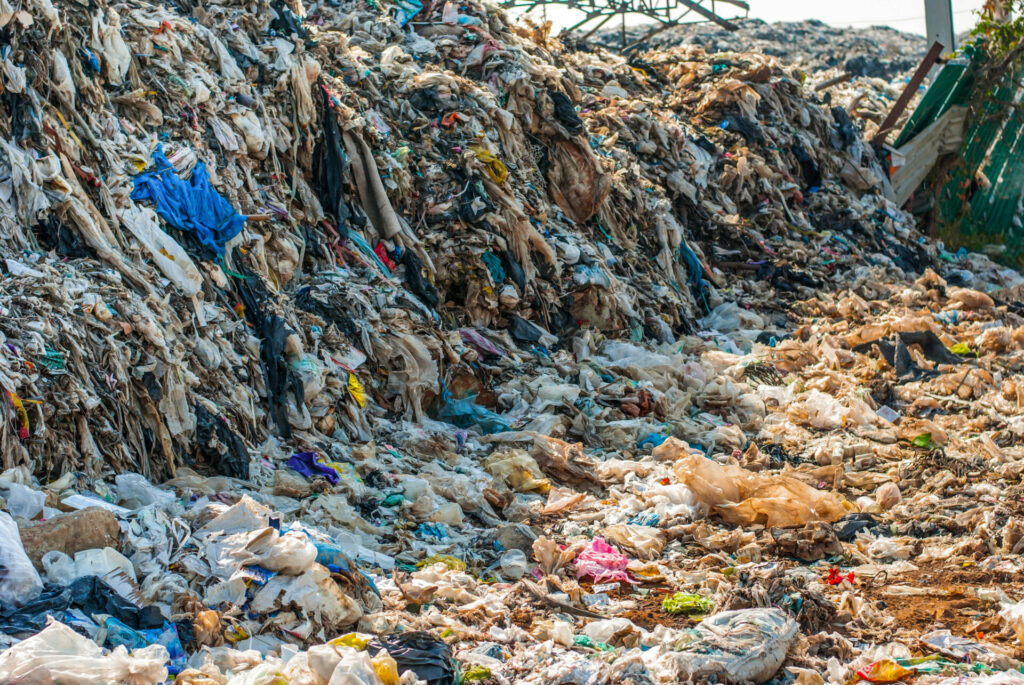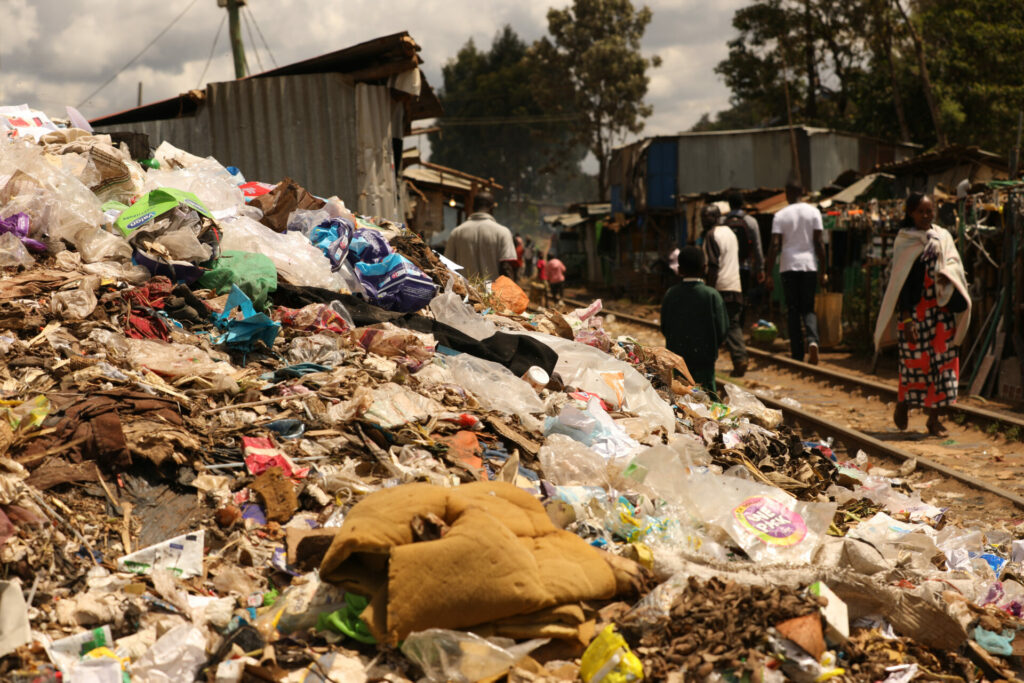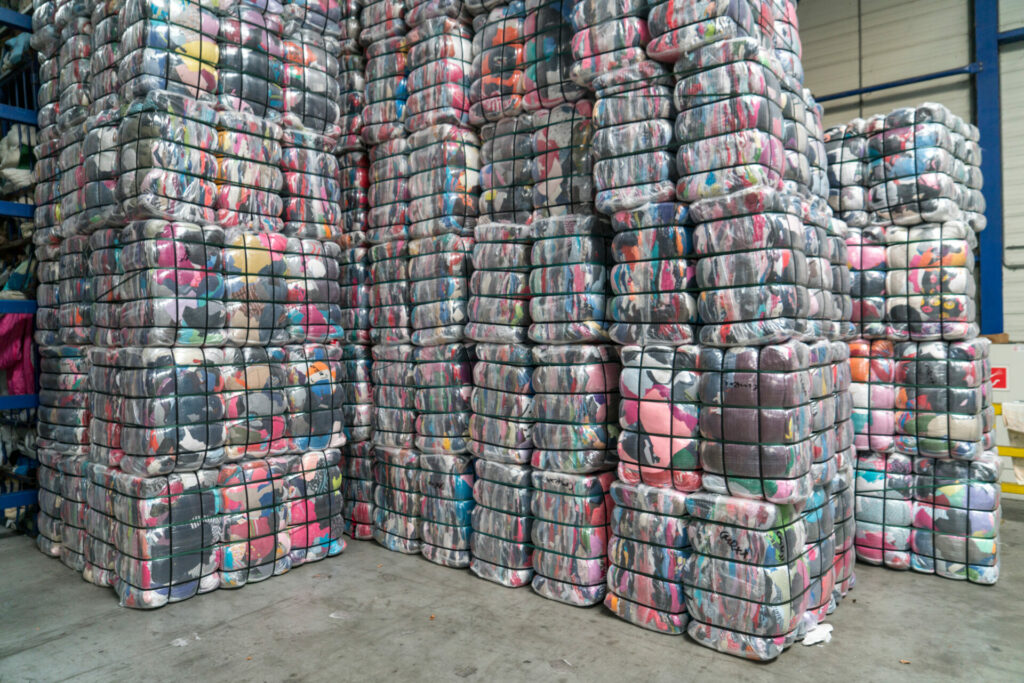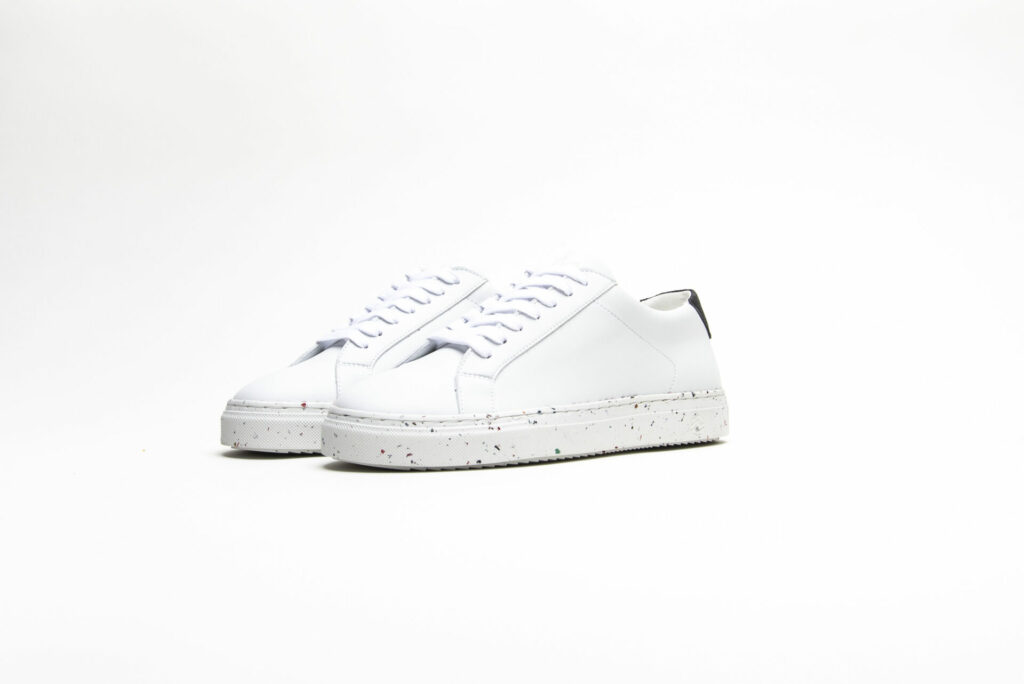Currently at one of the budget clothes stores in Dubai, you can buy a pair of fast fashion branded jeans for 69 dirhams (£14.75). That’s around the price of a pizza from the California Pizza Kitchen. The jeans have not been made in Dubai; they are not made of material found in Dubai. They have been manufactured in Bangladesh, China, India, Sri Lanka, Vietnam, and Indonesia and shipped thousands of kilometres to be sold for a small profit.
While the jeans are a bargain for consumers, they are costly for the environment. The carbon footprint of a single pair of jeans is 16.2kg of CO2, the equivalent of driving over 58 miles in a car, which might not sound much until you consider that there are estimated to be six billion pairs of jeans made each year. And that’s just one item of clothing.

Fashion comes at a price, and nowhere is this truer than in the environmental impact of fast fashion, where clothes are mass produced cheaply to feed the whims of consumers eager to wear the latest styles.
There’s a general rule in commerce that says if something is cheap at the point of sale, someone somewhere along the supply chain has paid a price. In the fast fashion industry there is a production line of misfortune that exacts a toll from workers, wildlife and the environment
This highly profitable global industry of cheap, low-quality clothing and accessories has created a hamster wheel of disposable consumption in which outfits last only a few washes and wears and are replaced by the next inexpensive item.
Killer Fashion

Online shopping, in which items can arrive the next day via courier, adds to the rapidity of this cycle. In the UK, for example, consumers wear an item of clothing on average only 14 times. Consequently, British consumers buy more clothes per person than any other country in Europe.
There’s a general rule in commerce that says if something is cheap at the point of sale, someone or something somewhere along the supply chain has paid a price. And in the fast fashion industry there is a production line of misfortune that exacts a toll from workers, wildlife and the environment.
Dangerous working conditions for garment factory workers were exposed tragically in 2013 when a garment warehouse collapsed in Bangladesh killing 1,134 workers and injuring 2,500 more. It is not just poorer nations where workers are exploited, however.
The fashion industry is responsible for 10 per cent of annual global carbon emissions –more than all international flights and maritime shipping
In the UK the textile industry is largely based in one city: Leicester. The garment district here is home to more than 1,000 factories, and around 10,000 workers for whom there have been long-held concerns about working conditions and lack of regulatory oversight. A 2015 report by the Ethical Trade Initiative, made up of retailers, trade unions and pressure groups, flagged illegally low pay and poor conditions.
Dye-ing to Look Good

People suffer, and so does the environment. Remarkable as it sounds, according to the World Bank the fast fashion industry is responsible for 10 per cent of annual global carbon emissions, more than all international flights and maritime shipping. Huge volumes of water are used in cotton production and dyeing (around 2,000 gallons to make a typical pair of jeans) while leather tanning and fabric dying release chemicals into water supplies, leading to pollution from hazardous chemicals.
Synthetic materials such as polyester, nylon and elastane are made from processed fossil fuels and washing them releases microplastics into the water systems and oceans, which ends up in sea life and in humans, via the food chain.
Finally, when clothes are used and discarded, many end up in landfill.
Without urgent action some estimate that by 2050 the industry will be responsible for a quarter of the world’s carbon budget.
Second-Hand September

The forecast is grim, but there is hope. Increasingly consumers are demanding more ethical practices from manufacturers. And pressure groups continue to highlight the worst fast fashion offenders and suggest solutions and alternatives.
Oxfam, for example, designates each ninth month of every year Second-Hand September in which people are challenged to only buy used clothes for the entire month. Around 30,000 pledged to take part in the campaign.
Last year actor Felicity Jones, who starred in The Theory of Everything, fronted the campaign.
Danny Sriskandarajah, Chief Executive of Oxfam GB, explains why it is so important.‘While the climate crisis is affecting us all, it’s hitting some communities worse. People facing poverty often don’t have access to the support needed to survive and recover from extreme weather, such as clean water on tap during a drought, or house insurance to help rebuild after homes are destroyed by floods.
‘The science is clear that we only have eight years to urgently and significantly reduce carbon emissions to prevent global warming from becoming a global catastrophe, which would create human suffering on an unimaginable scale. It’s not too late if we all take urgent action together.”
Without urgent action some estimate that by 2050 the fashion industry will be responsible for a quarter of the world’s carbon budget
In addition to attempts to sway consumer behaviour, the onus is also being put on producers. In July the European Commission introduced new rules that require fashion brands to pay for the costs of management of textiles waste. The fees levied on businesses will pay special attention to the environmental impact of their products.
New Rules
While the policy is a positive step in ensuring garments and footwear undergo professional sorting, it lacks specific reuse and recycling targets, potentially limiting its impact.
Urska Trunk, Campaign Manager at the Changing Markets Foundation commented: ‘We welcome this proposal, as it is the first time ever that the fashion brands will be forced to pay for their role in the growing waste crisis. However, the European Commission has missed the mark on textile reuse and recycling, stifling innovation in Europe and failing to put the fashion industry on a more circular trajectory.’
The Changing Markets Foundation recently highlighted the scandal of second-hand clothing, much of it made from plastic based materials such as polyester, being sent to Africa where it ends up unused and in landfill or in incinerators.

EU countries are currently dumping 37 million items of junk plastic clothing in Kenya every year that are too dirty or damaged to be reused, creating serious health and environmental problems for vulnerable communities.
Over 900 million items were sent to Kenya from around the globe in 2021. Almost 150 million of these items came from the EU and UK. One in three garments from the EU contain plastic and are of such a low quality that they are immediately dumped or burned. The number of garments equates to 17 items of clothing every year for each Kenyan, up to eight of which are waste.
In their most recent investigation, the campaign group placed tracking tags in second-hand garments which were then dropped off in a range of in-store recycling collection boxes operated by retailers including H&M and C&A. The garments were tracked to discover where they ended up.
The findings were shocking. One skirt and a top dropped off at the H&M store in London were shipped 15,000 miles to Mali via the UAE and Senegal. The donation box promised that garments would be ‘reworn, reused or recycled’ but the top remained unsold on a market stall while the skirt had been dumped in wasteland.

‘If the fate of our tracked garments is reflective of the wider market for used and donated clothing, it represents a very significant problem indeed,’ the charity stated. In fact, only five of the 21 garments left in the boxes found their way to customers on the same continent, typically via second-hand shops. Only one of the pieces was resold in the same country.
George Harding-Rolls, the campaign manager at the foundation, said: ‘The ideal destination for these clothes would have been reuse in the country they were dropped off in. All our clothes were in perfect condition, some even had the tags still attached, so there’s no excuse for them to be downcycled or shipped thousands of kilometres away.’
Clearly there is much to be done and not much time to do it. According to the UN Framework Convention on Climate Change, emissions from textile manufacturing alone are projected to skyrocket by 60 per cent by 2030.
Pre-loved Boost
Perhaps the biggest hope is fashion itself. Second-hand clothing is now referred to as ‘preloved’ or ‘vintage’ and the market has exploded, particularly among environmentally conscious Gen Z. Resale sites such as Depop and Vinted have done much to drive this consumer trend.
Preloved clothes are now mainstream and fashion districts from London to Paris and New York are full of boutiques selling used items. According to Statista, the global market value of second-hand and resale apparel was estimated to be worth US$177 billion in 2022 and projected to almost double by 2027 to US$351 billion.
And there are also signs that the popularity of fast fashion is on the wane. Recent figures show that sales of fast fashion brand Shein declined in the US for five months consecutively from June last year. Charity shops, meanwhile, had an 11 per cent rise in sales in the three months to the end of September, with Oxfam’s sales up 40 per cent in the run-up to Christmas.
Perhaps the environmental solution to fast fashion will be that it ultimately becomes unfashionable.













